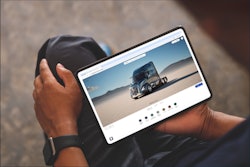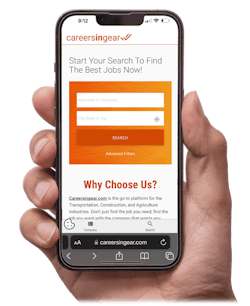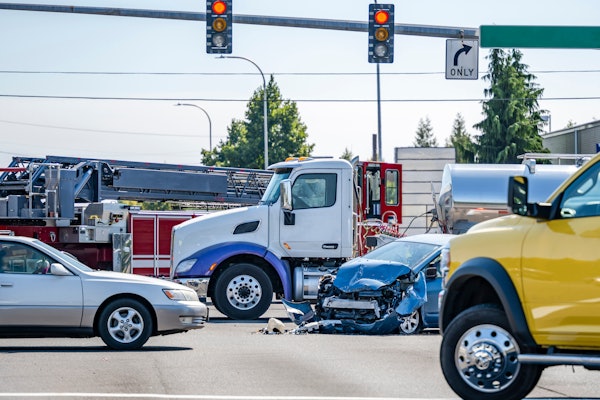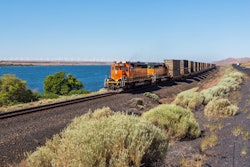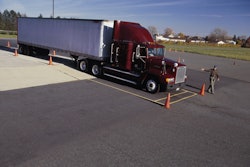
The rush to implement Artificial Intelligence (AI) brings the risk of using this still-emerging technology incorrectly or in the wrong places.
In a discussion Sunday at the American Trucking Associations' 2025 Management Conference & Exhibition in San Diego, Solera Vice President of Fleet Solutions Sean Ritchie said a haphazard approach to AI-only solutions could make fleets less safe and less compliant.
Too much focus Ritchie said has been on AI adoption simply because "everybody feels like they are behind the curve and if they don't get it, their business is going to be outcompeted."
However stakes are different when it comes to safety. The number of trucks involved in fatal crashes has jumped 49% in the last decade, said Johan Land, Samsara's head of engineering for safety.
"This is a life or death-type situation," Ritchie said, adding that given the current state of AI, which can be inefficient and ineffective in solving safety problems by itself, fleets are best served to balance AI with human intelligence.
The problem with false positives
Nine out of every 10 accidents, Land said, are caused by drivers' mistakes. However, false positives, where the AI flags a risk that doesn't exist, Ritchie said is a major concern and there's very little companies can do to prevent them.
"The truth is, that no matter what AI video-based system you have, you will have false positives," he said. "Anybody who tells you differently is not telling the truth."
False positives, Ritchie said, create a couple major issues: wasted time and driver distraction.
Even the best AI solutions have a 2%-10% false positive rate, he added, and some are much worse.
"Every second [safety teams] spend looking at video that doesn't have risk is time not spent on looking at video with actual risks," he said, adding this "noise" prevents fleets from focusing on the 20% of drivers who, according to Ritchie, represent 80% of the fleet's risk.
When in-cab feedback systems produce false positives, Ritchie said they become distractions and the false alerts eventually "discredit the entire system."
The liability of missed risks
Ritchie said another critical issue is "risk totality" – the idea that all risks in a video are identified by AI. According to Ritchie, upwards of 30% of the risk a fleet is liable for is missed by AI-only solutions.
Fleets are liable for acting on all data presented to them, not just AI-flagged risks, making a supplemental human review necessary, Ritchie said.
"If the video you're given only has the AI risk label, but there is other risk in the video not flagged by AI, you are still liable for that risk," Ritchie warned. "Not only are you liable for seeing it, you're liable for coaching on it and documenting that you're coaching on it.
"If a carrier is hauled into court in an accident, I guarantee opposing counsel is going to subpoena all the video for that driver and try and find situations where there was risk given to you and you didn't act on it."
The need for human-to-human coaching
Ritchie also cautioned against outsourcing coaching to in-cab technologies, which allow drivers to self-coach based on AI prompts, calling in-cab feedback a "good supplement" but "a very poor substitute" for human interaction.
"Humans need a human-to-human connection," he said. "The part of video-based safety [that works] is the human coaching. It's the ability to work with someone to look at the game film and get better."
He urged fleets not to "sacrifice effectiveness for convenience," adding that fleets implementing AI-based safety solutions need to balance that with human talent.
Land noted Samsara's AI platform identifies high-priority drivers that represent the most risk and escalates those for manager-led training, while the heavy lifting on less serious infractions is handled by AI. The goal, however, Land said is to "empower the managers to have great conversations with their drivers."
Ritchie said he believes AI-only solutions will get better, "but we're not there today. I think we're about 3 to 5 years away from AI being able to solve this for us. What are you going to do in the meantime?"
Until then, the stakes remain high. "Video-based safety over the years has saved countless lives," Ritchie said. "I also know... the risk of us not getting this right is literally life and death."



